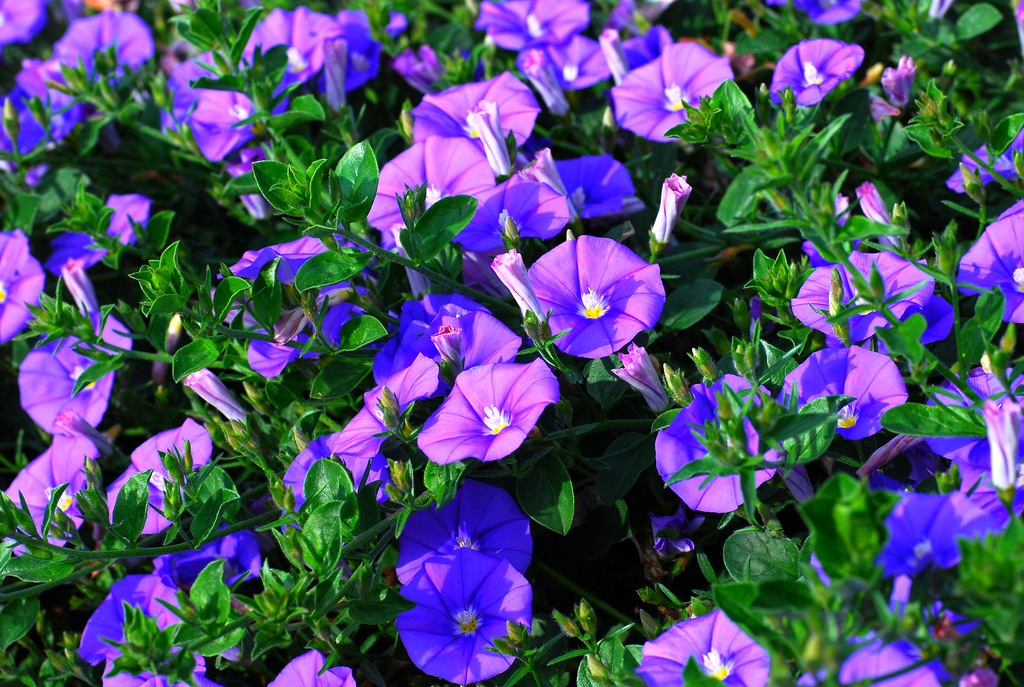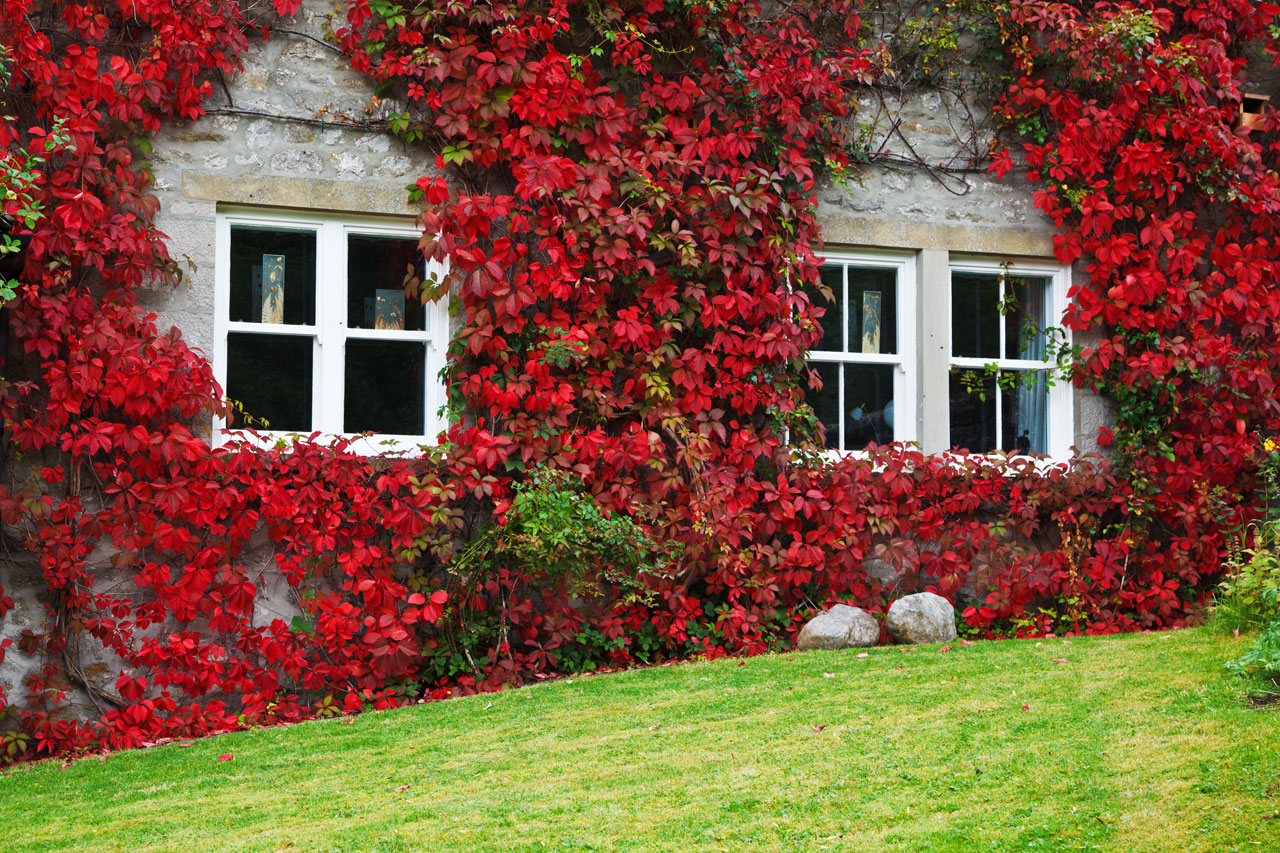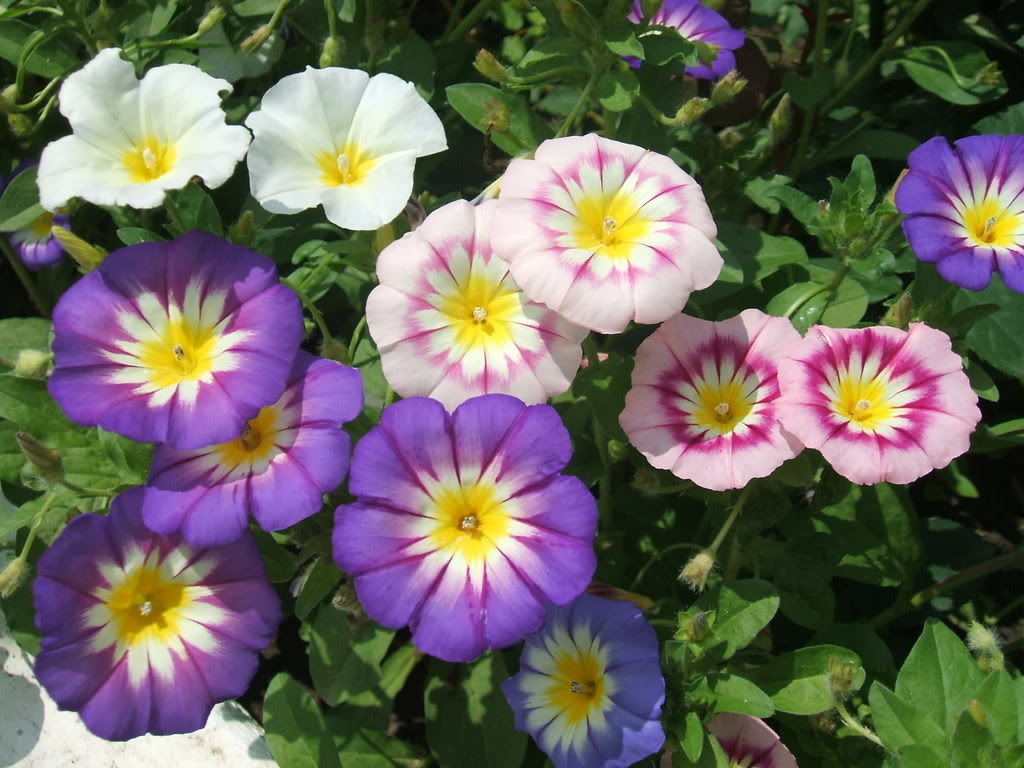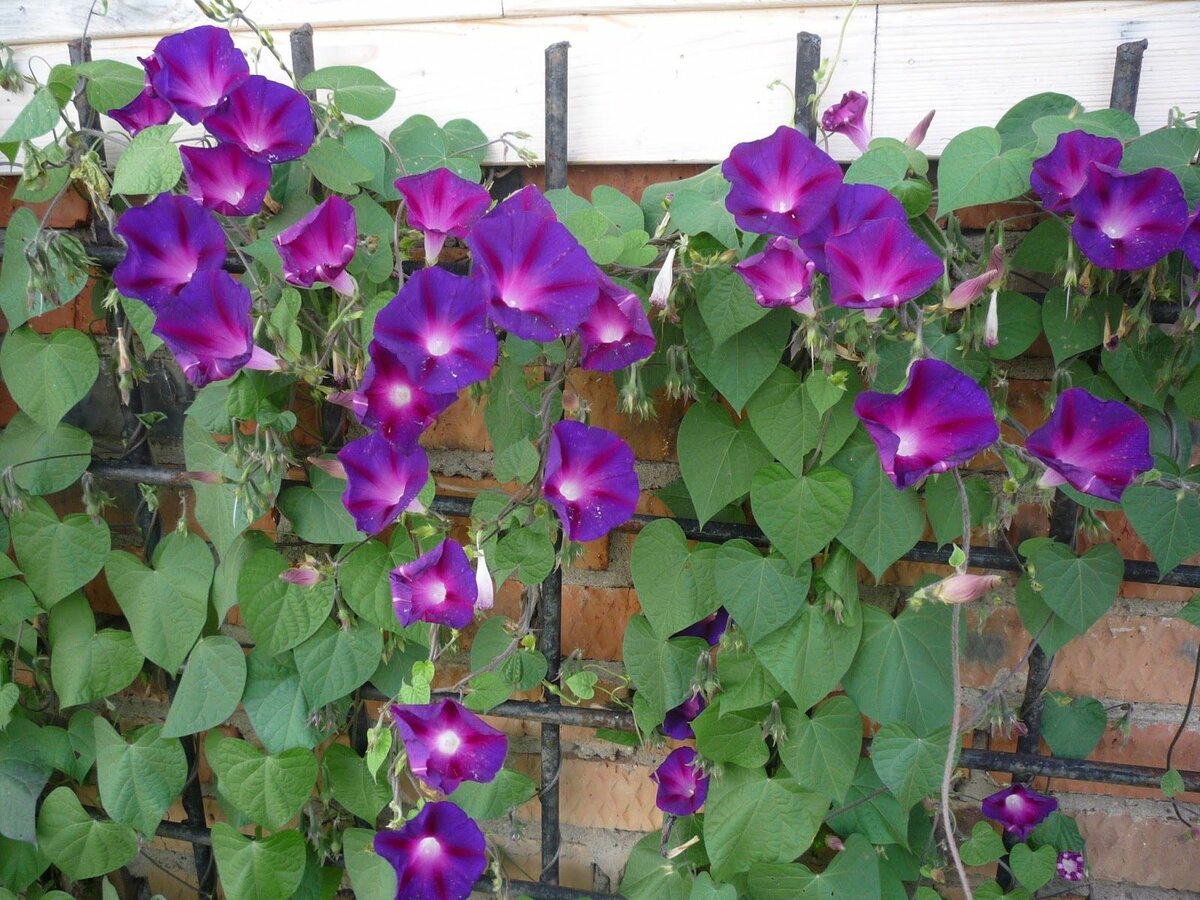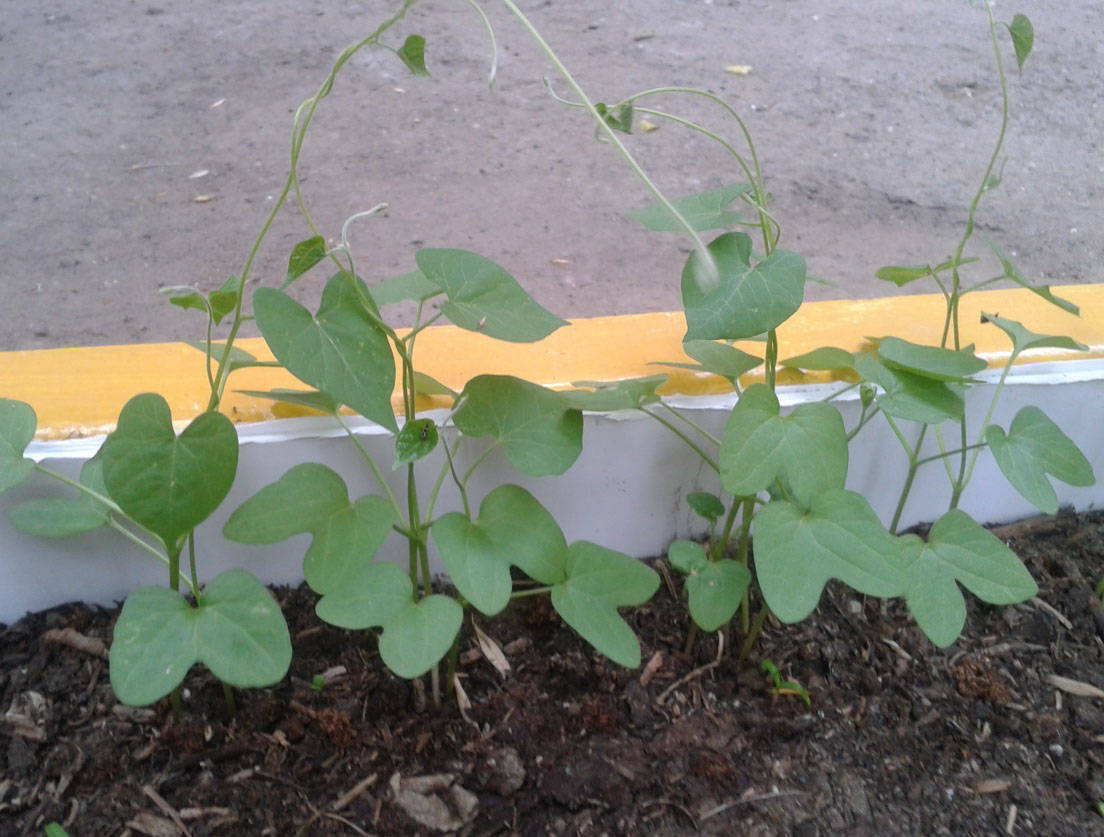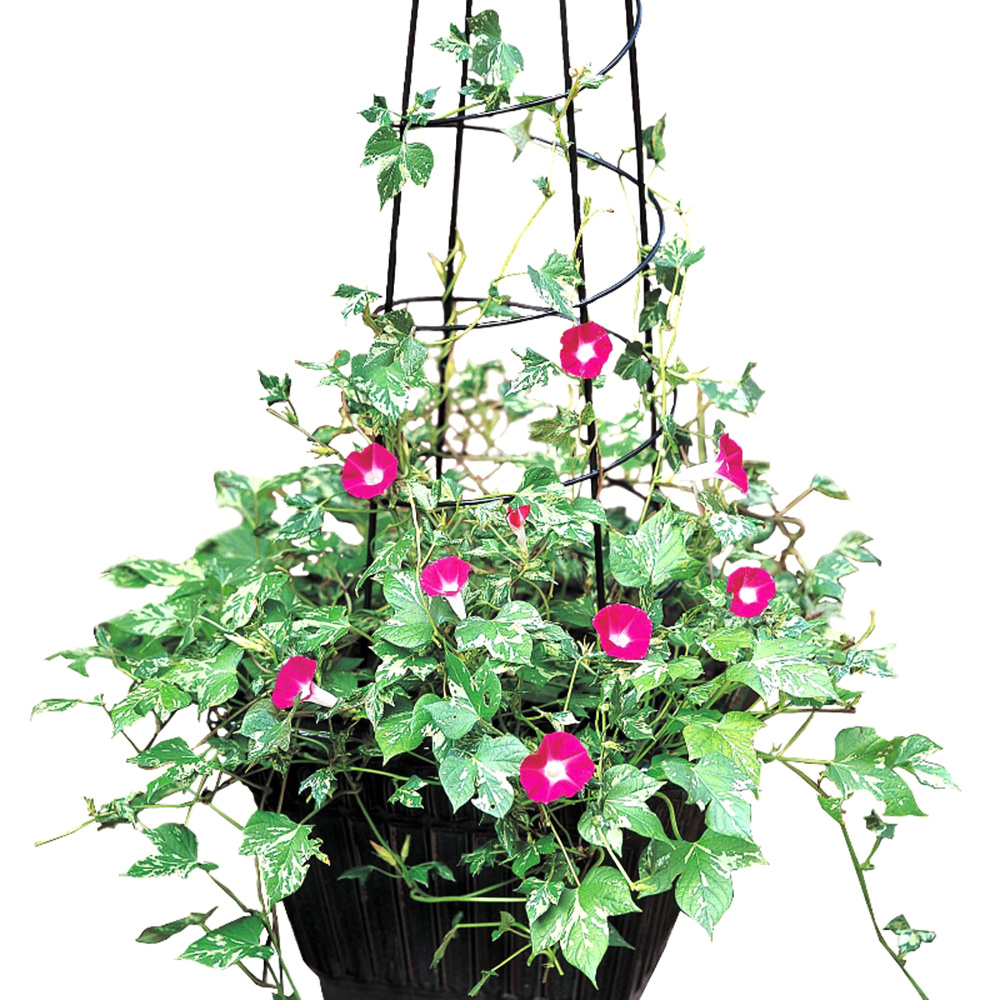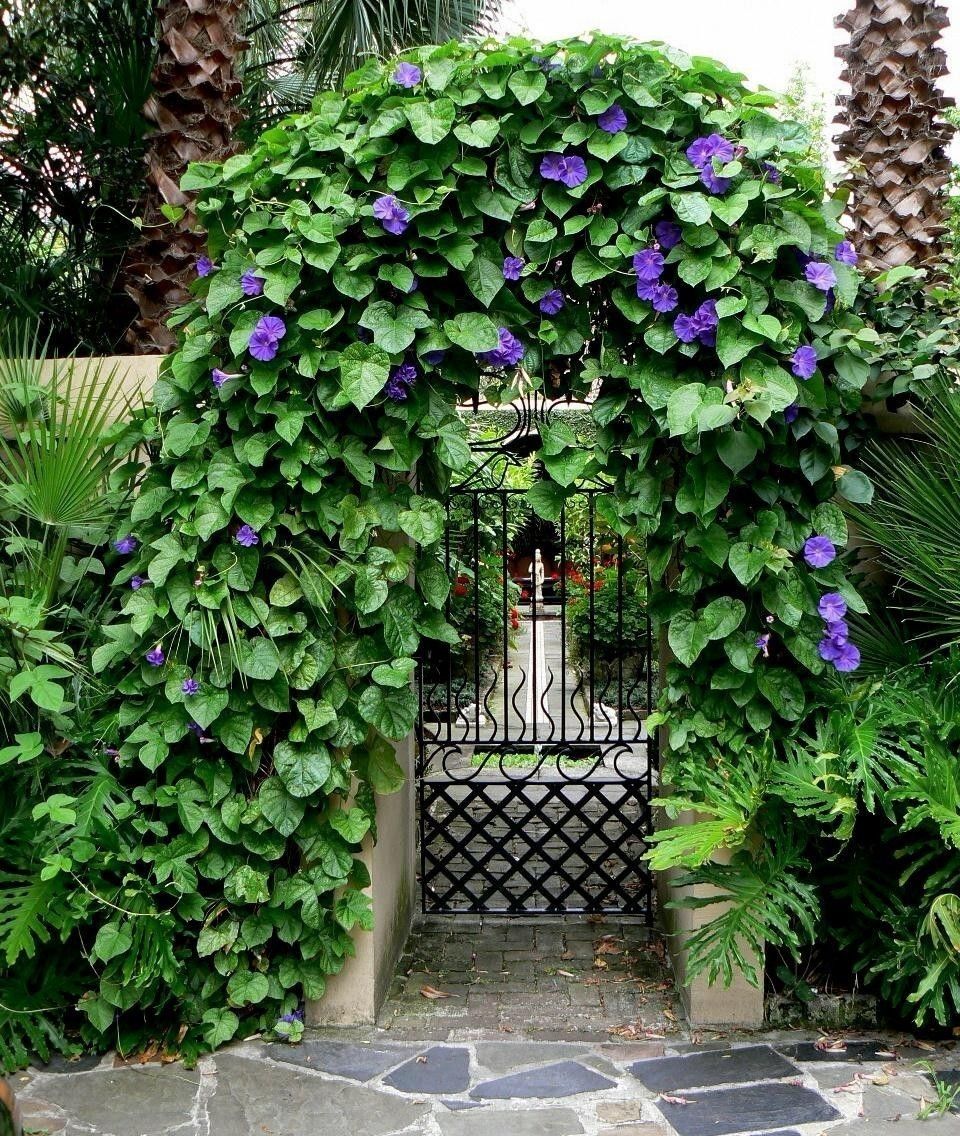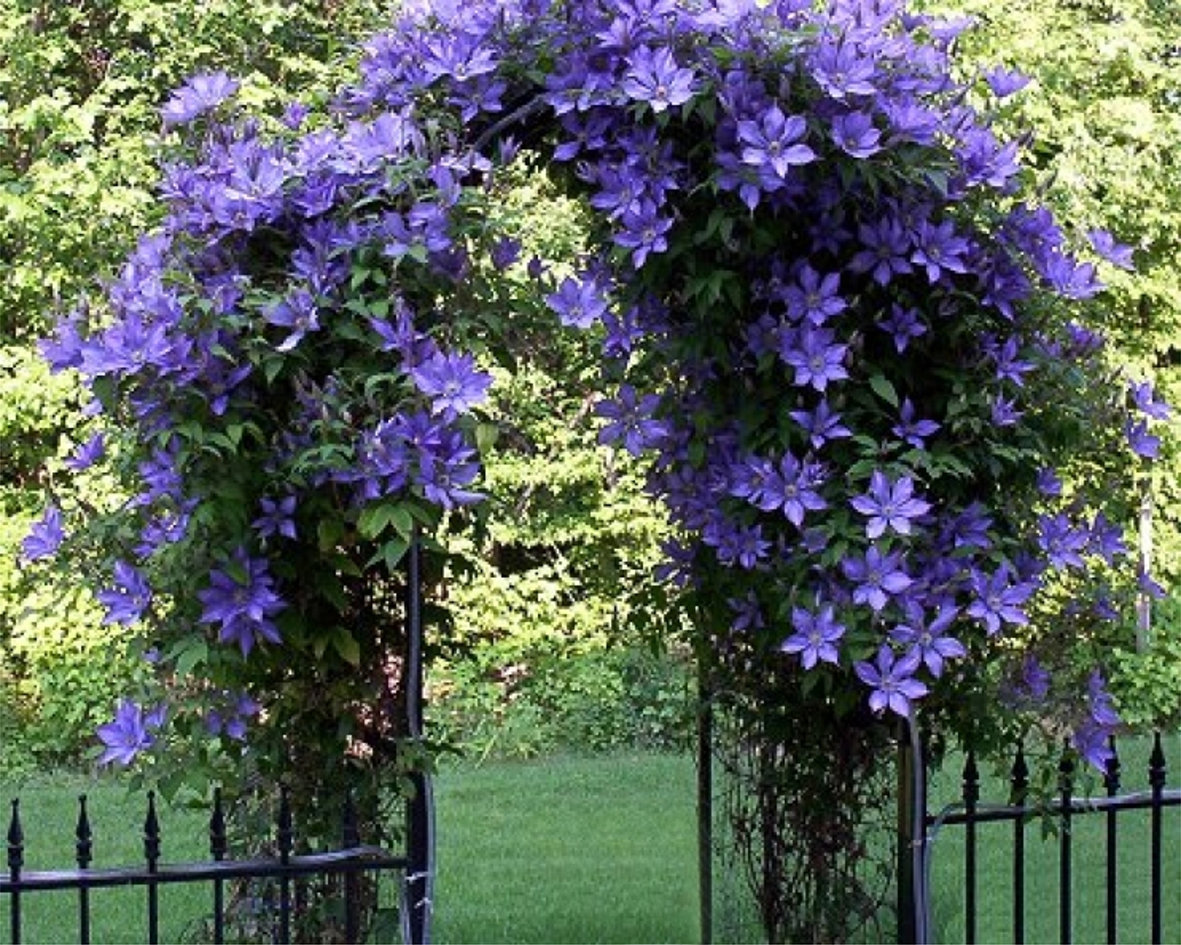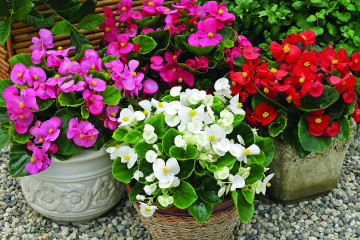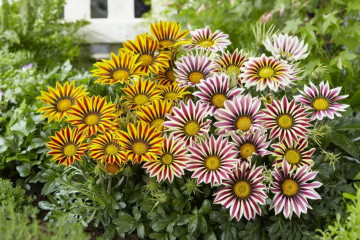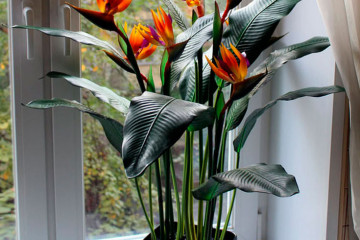Loach flower - an ornamental plant for growing in the garden
Content:
Amazingly beautiful, delicate and defenseless flowers have won human hearts since ancient times. Make life brighter. With their help, flower beds are created, gazebos are decorated. Bindweed, an unpretentious plant of the Bindweed family, is especially loved among flower growers.
Features of loaches
The homeland of the bindweed is considered to be the coastal zones of Italy, Sicily and northwest Africa. The Latin name is Convolvulus. The loach flower spreads between dry limestone rocks, covering them with a lush colored carpet and is considered a weed annual plant, numbering about 250 species. It has long (from 50 cm) abundantly branching shoots. The stems have good flexibility, easily cling to vertical surfaces, supports, wrap around them forming a dense mass. Abundant long flowering is another quality for which the climbing handsome man fell in love with flower growers. Over the years of experiments, several new varieties have been bred with an unusual leaf shape and funnel-shaped flowers of various colors.
Florists are delighted with perennial curly flowers for the garden. With their help, it is easy to close unsightly bald spots on the site, decorate slopes, create a hedge. Annual bindweed cope with this task just as well (we are not talking about weeds, which include white bindweed and the usual street flower loach).
Fast-growing loaches flowers are good in the design of temporary screens, gazebos. One has only to apply imagination, choose the right color scheme and you will get a wonderful shady corner for relaxation. A beautiful rich cascade of greenery is diluted with pretty flowers of white, pale pink, bluish or lilac shades that unfold in the morning. Ornamental types of loaches, with juicy bright colors of petals and limbs, are very popular.
For summer cottages, climbing perennial plants are irreplaceable "natural" facade decorators. Here it is worth giving preference to winter-hardy varieties: different types of maiden grapes (including cultivated types); Chinese wisteria; ampelopsis, climbing roses. Due to their ability to trail and branch, the plants form a lush green vertical, beautifully framing the terrace (veranda, balcony).
Types of garden bindweed
Planted in flower beds and in flower beds, loach flowers form a colorful blooming carpet. In curly frames - outlandish weaves. They are used for decorating rock gardens, borders, rockeries, arrangement of potted gardens.
Moorish bindweed (Convolvus sabatius)
For the ability to create picturesque falling cascades, the flower won the title of the most spectacular culture for hanging baskets and containers. The stems, framed with delicate gray-green leaves, reach half a meter in length. The flowers are in the form of a gramophone, more often of a light lilac, blue or ultramarine shade.
Bindweed tricolor (Convolvulus tricolor)
It has abundant branching, capable of giving it a "cap" shape. It reaches a height of 50 cm.Shoots are thin, densely covered with bluish oval leaves. Large, funnel-shaped flowers with a short pedicel and wavy edge reach 4 cm in diameter. It got its name because of the tricolor combination: the corolla stands out with a bright deep blue hue, the middle is white (light), the throat is bright lemon in color. The tricolor color sharply distinguishes the plant from other species. Bindweed tricolor growing from seeds is distinguished by a long flowering period (from the first days of summer to early September).
Bindweed (Convolvulus bicuspidatus)
Discreet, ordinary plant. A guest who descended to the central part of Russia from the Caucasus Mountains. It is a creeping plant rather than a curling plant like a street loach. There are few leaves, they all have an arrow-shaped shape, due to which the plant cannot form a flat carpet of greenery. Peduncles are long, sparse, with single pale pink axillary flowers.
Features of planting bindweed
Even an inexperienced grower can plant and grow an annual plant. Seeds for seedlings are sown in open ground (they are not afraid of frost) in the second half of April, or in seed boxes in the first days of March, after keeping them in water for 10-24 hours. Soil composition for seedlings: 2 parts of nutrient soil for 1 part of peat. The seeds are covered with a thin layer of earth on top and slightly compacted. Shoots appear in 2 weeks. They are watered as necessary and fed once every 2 weeks with a weakly concentrated solution of mineral fertilizers. Quenching is done by taking out pallets with seedlings to the street for 1-2 hours every day.
Planting in a permanent place occurs immediately after the end of frost, usually in mid-May. The distance between the holes is maintained at 20-25 cm.
Features of care in the garden
You need to pay attention to the qualitative composition of the soil when growing loaches in pots and flowerpots (pallets, boxes).
The soil
All types of bindweed, although they prefer loose, slightly alkaline soils (with a sufficient lime content), easily take root on any of its types. Many of them, in general, are not demanding on air permeability, therefore they are able to grow even in clayey areas. Mulching, loosening is desirable, but not necessary.
Lighting
They love open, well-lit areas. The street loach is a flower that perfectly tolerates even extreme periods of drought and the mercilessly scorching sun in the open field.
Watering
Excessive moisture can affect increased vegetative growth and oppression of flowering, so they are not often watered. A measure is needed in everything, a lot depends on climatic conditions. If, in the dry season, garden bindweed is rarely watered, but abundantly, it will delight the eye with lush flowering. A completely different story with bindweed in pots - soil moisture needs to be checked periodically and watered as needed. Better in the evening or in the morning.
Top dressing
Top dressing and weeding are carried out as needed. Ash can be used as a top dressing for adult plants.
Pruning
Conducted with overgrowth, if it harms the plant, or to shape frame crops.
What is the plant afraid of
The plant is resistant to many diseases. Occasionally bindweed are affected by powdery mildew, or aphids settle on them. In the first case, the plant is treated with fungicides, in the second - with solutions based on acaricide. Otherwise, the plant will bloom poorly. All types of varietal annual bindweed are cold-resistant, but thermophilic. Abundant flowering lasts from early June to autumn. Only then do the plants require increased attention (especially ornamental varieties): with additional feeding and correct, uniform watering, their flowering period increases.
Classification of perennial garden loaches
All perennial curly flowers, like annuals, are subdivided according to the way they are attached to a variety of supports. There are climbing cultures, clinging with hooks or suckers, crawling, curling, with and without antennae.
When planting in groups, one must take into account their compatibility with other garden plants, the tendency to be affected by the same pests and diseases. This will avoid the loss of several plants at once.
Perennial loach species
All flowering plants look incredible, they are capable of transforming any area beyond recognition. Perennial loaches are no exception:
- Actinidia (Actinidia Kolomikta; Actinidia Arguta; Actinidia Koloza; Actinidia Poligama) can not only serve as a decoration for the garden, but also give a harvest. For this, 2 plants are planted: male and female. Culture needs support: a gazebo, trellis, etc. Feels great in open sunny areas, likes abundant watering.
- Ampelopsis is a perennial climbing loach with antennae. A very beautiful plant, with medium-sized carved leaves and berries. The decorativeness of the culture is given by the various colors of the fruits. Ideal for decorating arches and spans.
- Maiden grapes: Vicha, Henry, Himalayan, Thompson - the best assistant to designers in gardening fences, creating awnings, and decorating facades. Weaving strong hedges is its main advantage.
- Floribunda wisteria and Chinese wisteria are considered the most beautiful flowering vines. Both species prefer sunny, but well-sheltered places. They like regular watering, respond well to feeding weakly acidic and neutral soils. Heat-loving beauties do not tolerate winters in central Russia (they require cover).
- Hydrangea Pereshkovaya. Contrary to popular belief, this is not a shrub, but a loach. Grows well in open windy places, accustomed to short daylight hours.
- Woodworm (round-leaved; climbing; climbing) is a beautiful ornamental plant that does not require any maintenance.
- Dioscorea Caucasian. With the help of a beautiful, but very thermophilic and demanding liana, landscape artists decorate outdoor staircases. The loach loves well-lit places, needs moderate watering.
- Blackberry. The plant is best used to decorate the area around the perimeter. It has thorny shoots that complicate care and processing.
- Honeysuckle. Almost all of its species are classified as decorative loaches. It grows poorly on clay soils, preferring soil enriched with humus. Requires abundant watering.
- Kirkazon, having large leaves, is suitable for creating "green carpets" in large areas. The plant is unpretentious, drought-resistant, grows easily in shade and partial shade, but does not tolerate drafts.
- Lemongrass is famous for its medicinal properties. Scourges need good lighting, and an earthen lump needs protection from direct sunlight and requires abundant watering.
- Lemonos (Clematis) and their hybrids - flowering loaches - are favorites of both breeders and landscape designers. With their help, artists decorate columns, create unique garden compositions.
- Ivy are powerful loaches. The only drawback of the plant is that material of sufficient strength is required as a support.
- Climbing roses. There is no need to talk about their beauty and fragrance. There are many species, with a wide variety of colors, shapes and sizes of buds and inflorescences.
- Fallopia is able to braid a large area in a short time and make it bloom.
Annual flowers of loaches are mostly unpretentious to care for. Some of the perennial garden vines, on the contrary, are demanding. But the result of the work is always pleasant: a paradise garden of lianas and picturesque islets, where loach flowers are the main characters.
